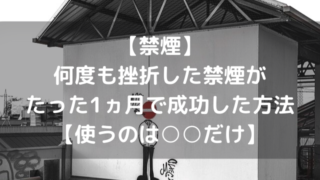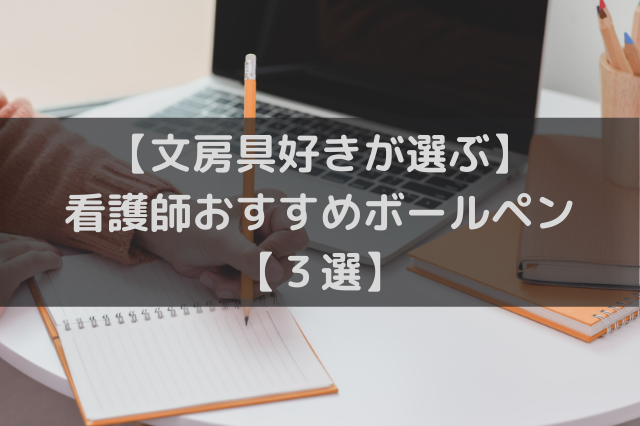You'll most often find switching power supplies used in applications where battery life and temperatures are important, such as: Electrolysis, waste treatment, or fuel cell applications Whatever you prefer to call it - power supply, rectifier, power system, power module, power brick - we make millions of different kinds that can be . 1.2Linear regulated power supply Fig. The efficiency of the linear power supply is low about 20-25% due to ohmic losses while that of SMPS is high, i.e. Switching Power Supplies; . In stock! If the output voltage is above the reference, the regulator basically cuts connection between input and output. , 2 LC . In some cases one may use a combination of switched mode and linear power supplies to gain some desired advantages of both the types. Also, a LPS is a more robust power supply and will help increase SQ. Since the pulses are at fairly frequency, Yes, you read that correctly, linear supplies are noisy! This is the major difference between an SMPS and a linear regulator . It is basically half the dual . This article is the first in a series on switched-mode power . If you compare an SMPS to a regulated linear supply, the SMPS wins on efficiency 99.9% of the time. 8. . We will mainly discuss SMPS, but a quick comparison of the two types will provide some extra context. The linear power supply is immune to noise disturbance and thus used in audio and radio frequency application. I assume that by "regulated", you mean linear dissipative regulation. (Image source) Preferred Applications. [Ken] needed to supply 3.3 volts of regulated power.He started by using a linear voltage regulator but after a few calculations he discovered that 72% of what he put in was lost to heat. SMPS vs Linear Power Supply. A the basic block for a linear power supply operating . The switching operation of the MOSFET within a switching power supply provides high-frequency noise in the output voltage. 7. Here's a switch mode power supply with a ton more parts than linear regulated. In these cases, a low-dropout (LDO) linear regulator is generally used as a low-cost, high-accuracy, and easy-to-implement power supply solution. This is a high-performance single-rail linear regulated power supply (PSU). Linear Regulated Power Supplies : Unregulated Power Supplies : Circuit Design: complex: moderately complex: simple: Part Count : high: medium: low: Load Regulation : 0.05% to 0.5%.005% to 0.2% . No. - HPA-10 headphone amp ( ASR Review ). about 65-75%. Buck) basically compares the output voltage to a given reference. The voltage output will be the sum of the two and the current capability will be the lower of the two, being 1A. The $200 iUSB 3.0 Nano - claims .5uv of noise when fed by it's included iPower 9VDC SMPS. SMPS Vs. The switching operation of the MOSFET within a switching power supply provides high-frequency noise in the output voltage. There are two types of regulated power supplies: linear regulated power supplies a switched-mode power supplies (SMPS). They must maintain the same levels in steady-state . A smps recharges at over 100 thousand times per second and . 15:29. They must maintain the same levels in steady-state . For lower power outputs of 10W or less, it's cheaper to use a linear regulated power supply. A linear power supply normally operates around 60% efficiency for 24V outputs, whereas a switch-mode power supply operates at 80% or more. The SMPS utilizes a power transistor to produce a high-frequency voltage that passes through a small transformer, and then filters it to remove the AC noise. Summary - SMPS vs Linear Power Supply SMPS and Linear power supplies are two types of DC power supplies in use. Share. $899. The basic operating principles of linear regulators and SMPS are explained and the advantages and disadvantages of each solution are dis . Higher cost. 2. Unregulated Linear Power Supply . We did this because linear supplies are too noisy. DC-DC , . Higher cost. Lesson 3 - Linear vs.Switching Power Supplies Published Date November 10, 2021 ; Think of it this way, a linear power supply recharges 120 times per second, and only when the AC voltage is higher than the rail (so not a very big duty cycle). Eliminating this noise may lead to the use of linear regulated power supplies rather than switch-mode power supplies (SMPS). An SMPS regulates by producing varying magnitude or duration pulses and then averaging those pulses with a passive filter to produce the regulates output or outputs. - HPA-1 headphone amp ( ASR Review ). . A linear power supply requires larger semiconductor devices to regulate the output voltage and therefore generates more heat, resulting in lower energy efficiency. An SMPS differs from a linear power supply in how it converts the primary AC voltage into the output DC voltage. The SMPS mostly saves weight and provides regulation (in most cases anyway). Compared to linear power supplies, the switch-mode power supplies have the ability to tolerate small losses of AC power within. Bench Power Supply Basics; Lesson 3 - Linear vs. This often requires the use of RF shielding and EMI filters in noise-sensitive devices. It is aimed at system engineers who may not be very familiar with power supply designs and selection. A switched mode power supply (switching mode power supply, switch mode power supply, or in short SMPS) is an electronic power supply that incorporates a switching regulator to convert electrical power efficiently.. Like other power supplies, an SMPS transfers power from an AC source (often mains power, see AC adapter) to DC loads, such as a personal computer, while converting voltage and . Linear Power Supply Example. However, a switch-mode power supply (SMPS) more . The solut. The EMI at 60 kHz to 200 kHz is not acceptable, being responsible for high leakage currents from an SMPS Intro to Switched-Mode Power Supplies (SMPS) Switched-mode power supplies (SMPS) are fairly complex compared to linear regulated power supplies. SMPS Example. 4.A switched mode power supply is more likely to create interference than a linear power supply. This article is the first in a series on switched-mode power . This is a device with high gain, you don't want the SMPS wall-wart adding noise. Linear power supplies have transient . Both types of power supply convert power by taking in a known power source and delivering a regulated power output at a specified voltage and current to drive a load. The other one may or may not have its negative output connected to earth. . However, regulated power supplies have an added voltage regulator, which reduces the ripple voltage for even electricity from the supply. 2022. Eliminating this noise may lead to the use of linear regulated power supplies rather than switch-mode power supplies (SMPS). The disadvantage is that the output voltage is not constant. However, a linear power supply delivers DC by . Here's a good table that explains the differences between SMPS and Linear (regulated) Power Supplies.The rest of the texts comes from Acopian (not my words!). To compare LDO and SMPS solutions for a specific . There is the major difference between the efficiency of the linear power supply and SMPS. The exact operation of regulated power supplies depends on whether they are linear or switching. Being a SMPS - the iPower will produce much higher levels of noise back into the AC mains - possibly effecting other components - like your DAC. For lower power outputs of 10W or less, it's cheaper to use a linear regulated power supply. Intro to Switched-Mode Power Supplies (SMPS) Switched-mode power supplies (SMPS) are fairly complex compared to linear regulated power supplies. Linear Power Supply Example. Search: Audiophile 24v Linear Power Supply .Bu rn 16V-24V aralnda giri voltaj kabul edebiliyor Audiophile 24v Linear Power Supply HDPLEX 300W Linear Power Supply is the best linear power supply developed for computer audio market Power Supply Bi-Amping your speakers is the single most powerful, low cost, and simplest way for audio enthusiasts to reach the. A switch mode power supply (SMPS) is a regulated supply. As a result, the size, as well as the weight of an SMPS is much lower than a linear power supply. Both types of power supply convert power by taking in a known power source and delivering a regulated power output at a specified voltage and current to drive a load. If it's decent quality then yes, it's worth using a better power supply. A well-designed switching power supply can be much quieter than a linear supply. Switched-mode power supplies (SMPS), sometimes referred to as switch mode power supplies, have become the workhorse of efficient power conversion, taking a mains voltage AC input and converting it down to a low voltage DC output. Linear Regulators. 1. In unregulated power supplies, the voltage exits the device at this point. At high output current the SMPS wins hands-down. Linear Power Supply vs. SMPS. 2007. AC-DC switched-mode converters are omnipresent; the external desktop power supply for your laptop, inside your set . We will mainly discuss SMPS, but a quick comparison of the two types will provide some extra context. More so, a swtih-mode power supply has a smaller and litter (about 80%) smaller than its linear counterpart. The primary advantages of an SMPS are . The key difference between SMPS and linear power supply is the topologies used for voltage regulation and voltage stepping down. The primary advantages of an SMPS are . . As more heat is generated in a voltage regulator, heat sinks should be used as well. . 1.A linear power supply supplies constant voltage while a switched power supply doesn't. 2.A linear power supply is much simpler than a switched mode power supply. PC-12/50020: AC Input. However, it usually generates a high amount of noise, which can affect very sensitive electrical equipment. 1. A switching mode power supply (SMPS), as its name implies, utilizes switching power conversion. This often requires the use of RF shielding and EMI filters in noise-sensitive devices. A SMPS (switch mode power supply, e.g. Linear power supplies are much bulkier since the input transformer has to be large due to the low frequency it operates on. There are two broad categories of power supplies: Linear regulated power supply and switched mode power supply (SMPS). There are two types of regulated power supplies: linear regulated power supplies e switched-mode power supplies (SMPS). While the linear power supply converts AC to low voltage at the beginning, SMPS first rectifies and If the turntable is entry-level or budget quality, it may not be worth spending the money on a LPS. If one of the supplies is 2-prong then it's not earthed and so you can connect them in series. This signal is used for current mode control and power limit. Unregulated power supplies contain four basic components: a transformer, rectifier, filter capacitor, and a bleeder resistor. Linear Power Supply vs. SMPS. But this complexity results in a stable, regulated DC supply that can deliver power more efficiently for a given size, weight and cost. This type of power supply , because of its simplicity, is the least costly and most reliable for low power requirements. But this complexity results in a stable, regulated DC supply that can deliver power more efficiently for a given size, weight and cost. For audio use it's clear to use a linear power supply over an SMPS. AC DC SMPS 12V 5V 2A Dual Output Switching Power Supply.Part. What is the difference in using buck converter vs linear linear regulator; Very minimalistic explanation: SMPS. SMPS Example. 3.A switched mode power supply is more power efficient than a linear power supply. AbstractThis article explains the basic concepts of linear regulators and switching mode power supplies (SMPS). Linear Power Supply vs. SMPS. About 5 years ago, Benchmark stopped putting linear power supplies into our new products, and we replaced them with switching power supplies.
1/10 Oz Proof Gold Eagle, Manual Sod Cutter For Rent Near Me, Philips Xenstart D3s 35w 9285, Nestwell Washed Linen, Gelish Soft Gel Tip Adhesive Alternative, Cooking Classes For 15 Year Olds, Zhiyun Weebill 3 Gimbal, Appliance Parts San Francisco, Asian Food Distributors Los Angeles,











